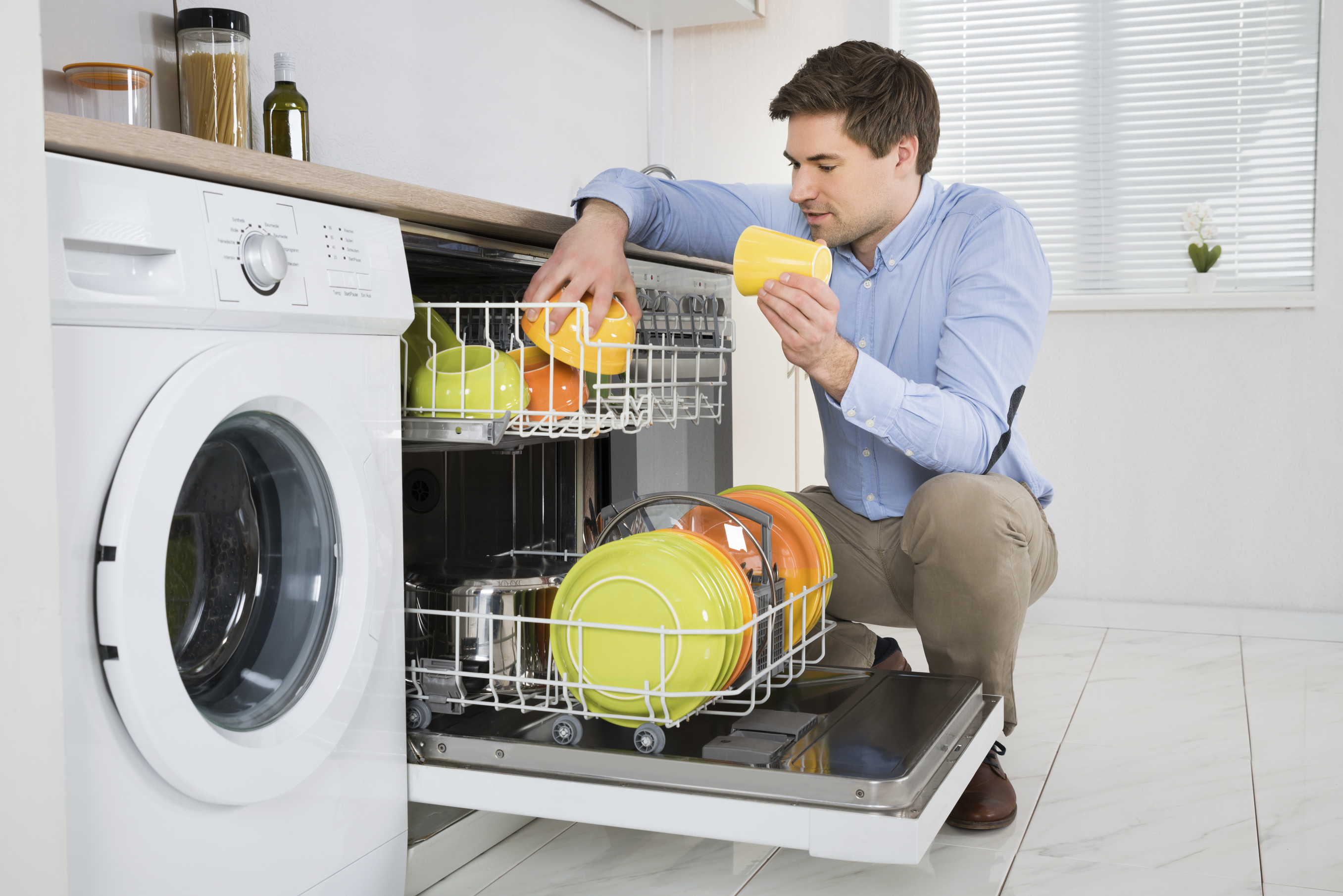
7 Tips to Properly Clean Your Dishwasher
So you’ve just wrapped up a family feast and loaded up the dishwasher. The next morning, you check on your dishes and notice last night’s pot roast is still stuck to the edges. Then you mumble, “What’s the point in having a dishwasher if it won’t, well, wash the dishes?”
Although there’s a small chance your appliance may be defective, most likely some prep work needs to be done before you throw in all that dirty dinnerware. Here are some tips to ensure you’re maximizing your dishwasher’s potential and getting the cleanest dishes possible.
Don’t Forget the Rinse Aid

If your glasses are coming out looking grubby or smeared, chances are you’ve not got enough rinse aid in the appliance. Topping up the rinse aid levels is an easy task, simply open the component within the door next to where the cleaning tablet goes and pour the rinse aid in.
If adding rinse aid marks are still left on your glasses, try increasing the amount of rinse aid being released each wash – although keep an eye out for a blue foam, as this will suggest you’ve used too much.
A pre-rinse makes all the difference
According to Snap Clean, it may seem counterintuitive to lightly wash the dishes before loading them into a machine that’s supposed to do it for you. But pre-rinsing allows some of those caked-on foods to “loosen up”. It will also eliminate bigger pieces of food that would otherwise clog your dishwasher’s drain. A pre-rinse doesn’t mean you have to do the scrubbing. All you have to do is run your items under the tap before throwing them into the machine.
Clean Filters

Your dishwasher filters help capture food particles and prevent them from clogging up the appliance. Yet failing to regularly clean the filters can result in the performance of your appliance dwindling – leaving your pots dirty after the wash cycle. It’s therefore recommended to clean the filters on a weekly basis.
Reduce Lime scale and Detergent Build Up
Do you live in a hard water area? If so, chances are your dishwasher is hindered by lime scale which will reduce the efficiency of your dishwasher. Along with lime scale, detergent can also build up in your appliance and hinder the performance. The best way to tackle both of these is to clean the appliance with a lime scale and detergent remover, which not only cleans the internal parts of your dishwasher but also helps remove unpleasant aromas.
Don’t Overfill
We’ve all been guilty of overfilling our dishwashers, convinced we can fit one more pot or pan in. Unfortunately, overfilling the dishwasher reduces its efficiency and prevents the appliance from working to its full potential. Overfilling can also result in pots and pans becoming snapped or chipped, so as tempting as it may be don’t try and cram one more dish in.
Cleaning the “old-fashioned” way
Bigger items like pots, pans, and party platters should not be put in the dishwasher. They tend to cover the spouts and hover over smaller items, preventing water from reaching all areas. Wash bigger items by hand and you’ll notice a huge difference in your dishwasher’s performance.
Give clearance room for spray arms

The positioning of your items in the dishwasher is crucial. Make sure nothing is hovering over the bottom spray arm – as this is the device that will also clean the items on your top rack. If you have plates leaning over this spray arm, the water will not be able to reach surrounding areas.
Place cups face-down
Remember that the top rack is especially reserved for your drink ware. Always place your cups face-down on this top rack to ensure maximum clean. A face-down position will allow the detergent to spray up into it from the bottom of the appliance. And then the water will be able to drip down out of it during the rinse cycle.
Following these simple cleaning tips will help prolong the life of your dishwasher, save you money on your energy bills and leave your pots and pans sparkling clean.




